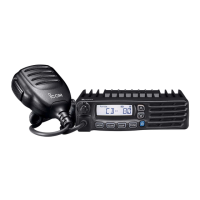ii
PRECAUTIONS
R
WARNING! NEVER operate the transceiver during a
lightning storm. It may result in an electric shock, cause a
re or damage the transceiver. Always disconnect the power
source and antenna before a storm.
R
WARNING! NEVER connect the transceiver to an AC
outlet. This may pose a re hazard or result in an electric
shock.
R
WARNING! NEVER operate or touch the transceiver
and microphone with wet hands. This may result in an
electric shock or damage the transceiver and microphone.
R
WARNING! NEVER connect the transceiver to a
power source of more than 16 V DC. This could cause a re
or damage the transceiver.
EXPLICIT DEFINITIONS
WORD DEFINITION
RDANGER!
Personal death, serious injury or an
explosion may occur.
R
WARNING!
Personal injury, re hazard or electric
shock may occur.
CAUTION Equipment damage may occur.
NOTE
If disregarded, inconvenience only. No
risk of personal injury, re or electric
shock.
R
WARNING! NEVER connect the transceiver to a
power source using reverse polarity. This will damage the
transceiver.
R
WARNING! NEVER cut the DC power cable between
the DC plug and fuse holder. If an incorrect connection is
made after cutting, the transceiver may be damaged.
R
WARNING! NEVER
place the transceiver where
normal operation of the vehicle may be hindered or where it
could cause bodily injury.
CAUTION: DO NOT expose the transceiver and
microphone to rain, snow or any liquids. The transceiver and
microphone may be damaged.
DO NOT push the PTT when not actually intending to
transmit.
DO NOT allow children to play with any transceiver
equipment containing a transmitter.
DO NOT operate the transceiver near unshielded electrical
blasting caps or in an explosive atmosphere.
DO NOT operate the transceiver for extended periods
without running the vehicle’s engine. The transceiver’s
power consumption may soon exhaust the vehicles battery.
DO NOT set the transceiver in a place without adequate
ventilation. Heat dissipation may be affected, and the
transceiver may be damaged.

